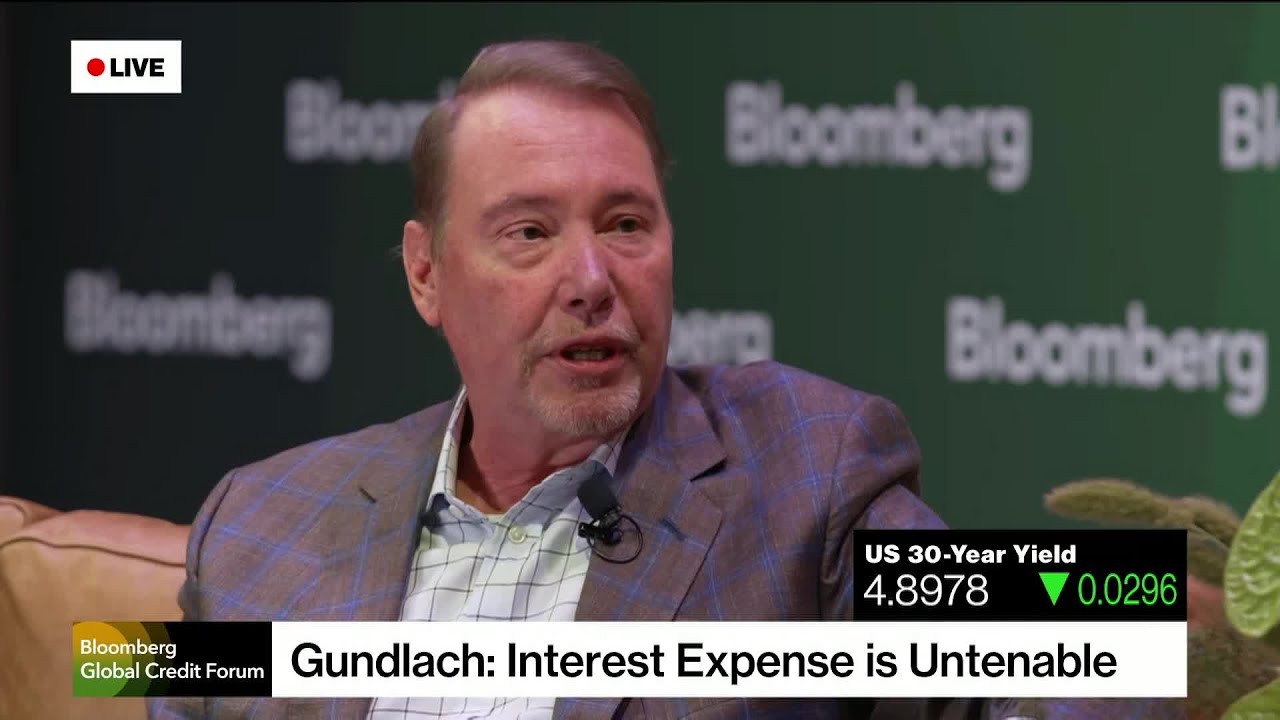Jeffrey Gundlach warns that the U.S. faces an unsustainable fiscal trajectory with rising debt and bond yields, potentially leading to a decline in the dollar and increased gold demand as safe havens. He advises investors to adopt a long-term, diversified strategy by holding cash, gold, and foreign assets, while remaining patient for market corrections amid systemic risks and technological shifts.
In the interview, Jeffrey Gundlach discusses the unusual behavior of the U.S. economy and financial markets, highlighting that traditional patterns, such as falling bond yields following Fed rate cuts, are no longer holding true. He points out that the recent rise in long-term Treasury yields and the steepening yield curve reflect market recognition of the unsustainable nature of the U.S. fiscal situation, particularly the mounting national debt and rising interest expenses. Gundlach emphasizes that the U.S. is on an unsustainable fiscal path, with trillions of dollars in maturing bonds issued at much lower interest rates, now being replaced with higher-yielding debt, increasing the country’s debt servicing costs significantly.
He warns of a coming reckoning where the U.S. will need to address its massive $37 trillion debt, which is growing rapidly. The current market environment suggests that investors are beginning to anticipate this crisis, with capital flows shifting away from U.S. assets and into non-dollar investments. Gundlach suggests that this could lead to a decline in the dollar and a reassessment of U.S. Treasuries as safe assets, with gold increasingly viewed as a true flight-to-quality asset. Central banks have been accumulating gold, and its price has surged past $2,000 per ounce, signaling a shift in perception about what constitutes a safe haven.
Regarding credit markets, Gundlach has reduced his allocation to below-investment-grade debt, citing overinvestment and deteriorating liquidity, especially in private credit. He compares the current private credit boom to the credit excesses seen in 2006-2007, warning of potential forced selling and a correction similar to past financial crises. He notes that the environment resembles previous bubbles, with high valuations and overleveraged institutions, and anticipates a significant market downturn or buying opportunity in the future, possibly around 2027-2028, when systemic stresses are expected to peak.
Gundlach also reflects on the broader economic and societal shifts, emphasizing that technological revolutions like electricity, the internet, and AI take decades to fully impact markets and society. He warns that enthusiasm for new technologies often leads to bubbles, as seen with dot-com stocks and electricity stocks in the early 20th century. He draws parallels to current AI investments, cautioning that the true economic effects will unfold gradually over time. He advocates for long-term investing in emerging markets like India, which have demographic advantages and growth potential, and suggests diversifying into foreign currencies and gold as hedges against systemic risks.
Finally, Gundlach underscores the importance of patience and strategic positioning in uncertain times. He advocates for holding cash, gold, and foreign assets while waiting for market corrections to present buying opportunities. He warns that market declines tend to be sharp and swift once systemic issues become apparent, and advises investors to be prepared for a significant restructuring of financial and political institutions. Overall, his outlook is cautious but strategic, emphasizing the need for diversification, long-term thinking, and readiness for a major shift in the global financial landscape.
